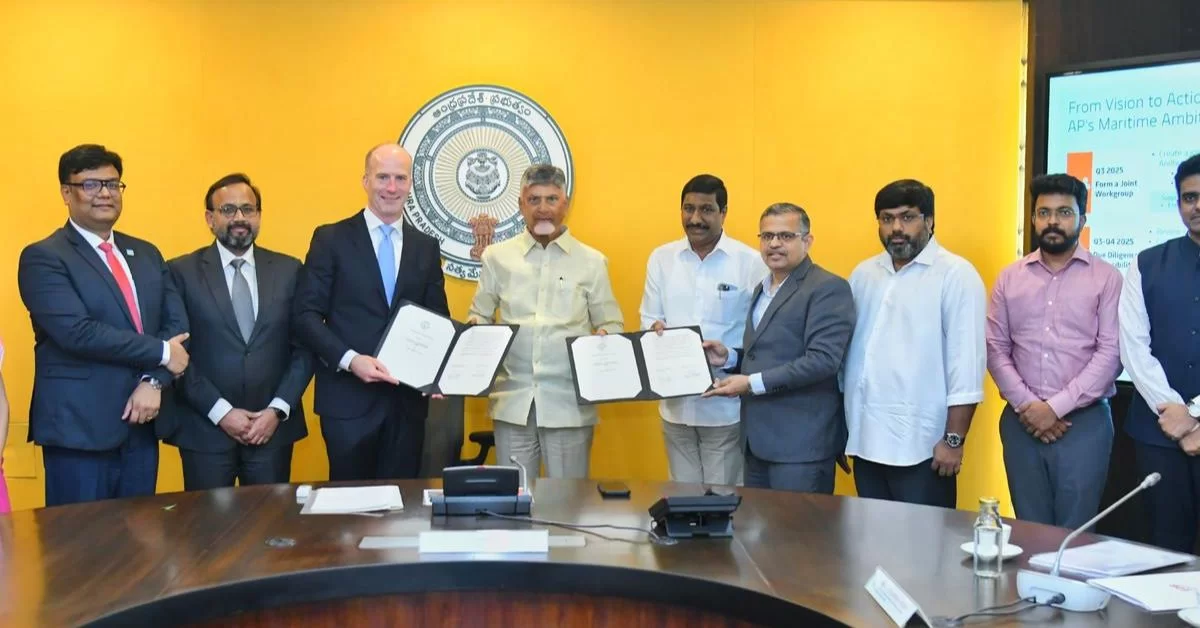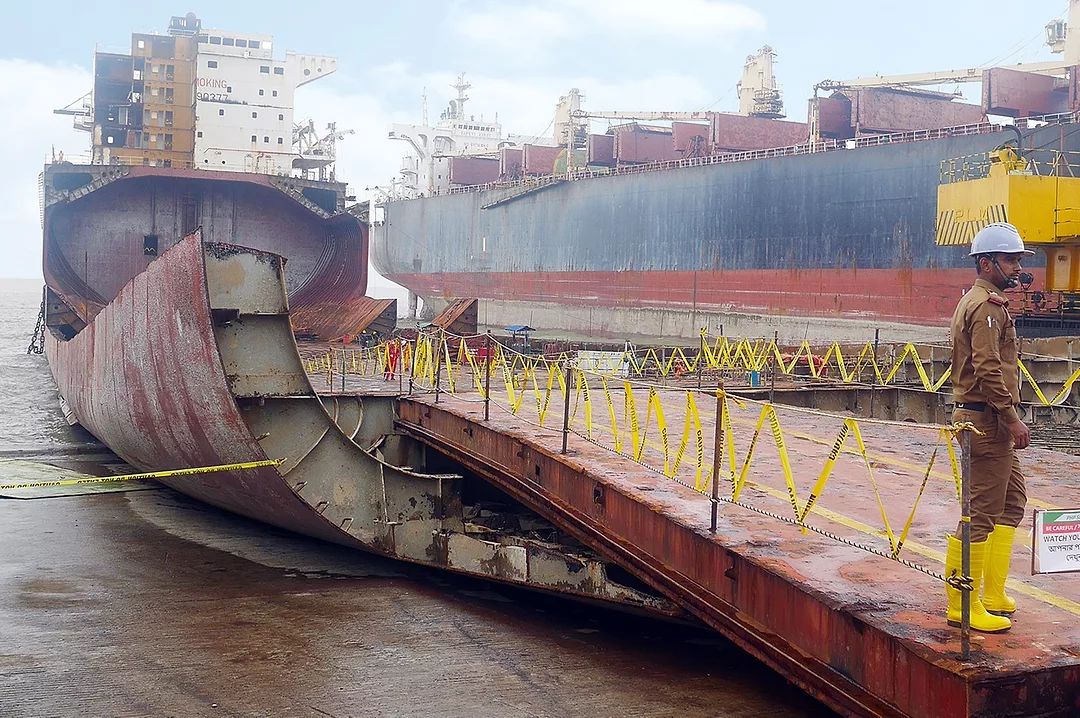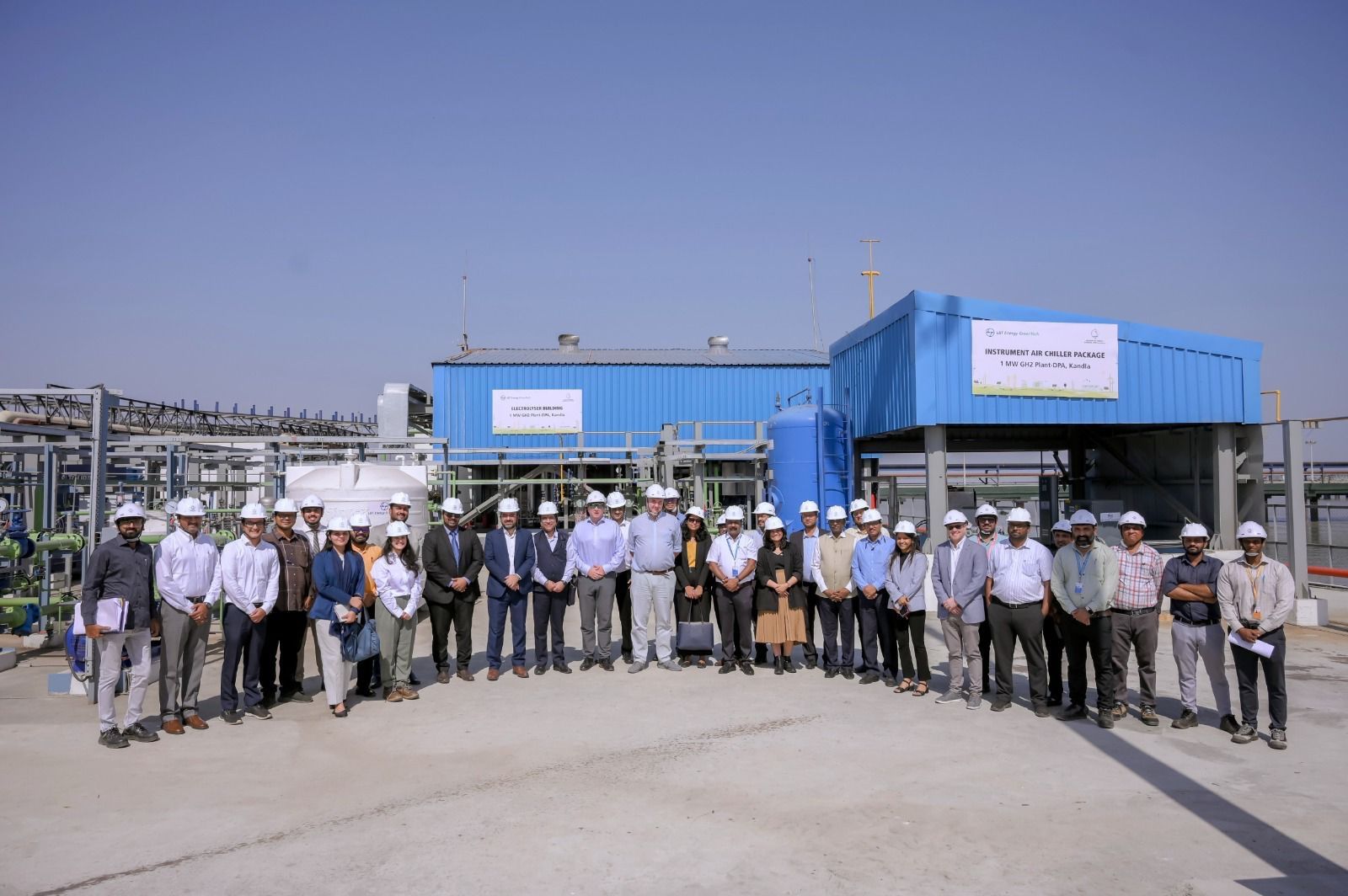APM Terminals Signs Pact to Develop Andhra Pradesh as India’s “Eastern Gateway”

APM Terminals, the terminal operations arm of AP Moller-Maersk, has signed a significant agreement with authorities overseeing ports along India’s east coast to explore the development of new marine infrastructure. The Memorandum of Understanding (MoU), signed on August 22, is being hailed as a step toward creating an “Eastern Gateway” to expand trade and position Andhra Pradesh as a major logistics hub.
Officials emphasised that the agreement aligns with India’s broader strategy to leverage its long eastern coastline and strengthen maritime trade capacity. Andhra Pradesh, with more than 620 miles of coastline along the Bay of Bengal, holds a unique geographical advantage. The state government has long articulated its ambition to build a network of ports, fishing harbours, and fish landing centres at regular intervals of about 30 miles, ensuring that every coastal district can contribute to maritime trade and fisheries development.
At present, the state’s most prominent maritime facility is Visakhapatnam Port, one of India’s 12 major ports and the third-largest by cargo volume in the country. Visakhapatnam is primarily a bulker port, handling commodities such as coal, iron ore, and petroleum products, while container operations remain comparatively limited. Beyond Visakhapatnam, Andhra Pradesh already hosts 15 ports spread across eight coastal districts. Of these, five are operational non-major commercial ports, while four additional greenfield projects are currently under construction and expected to be operational by 2026.
The agreement with APM Terminals is expected to give a new push to the state’s maritime ambitions. As part of the MoU, APM has indicated its intent to invest approximately $1 billion in modernising port and terminal infrastructure in Andhra Pradesh. This includes developing facilities at three key locations—Machilipatnam, Mulapeta, and Ramayapatnam—which are among the state’s most strategically planned new ports.
Progress on these ports has already been underway. Ramayapatnam Port, for example, has been advancing rapidly, with local authorities reporting earlier this year that work on Phase 1 of the project had reached nearly 64 per cent completion. Meanwhile, Phase 1 development at both Machilipatnam and Mulapeta ports has surpassed 40 per cent. With APM’s involvement, officials anticipate that construction timelines and operational readiness could be significantly accelerated, ensuring that these ports are equipped with modern technologies and global best practices.
APM Terminals is being considered a natural partner for this endeavour. The company has a long history in India and a reputation for introducing advanced cargo handling technologies, ensuring operational efficiency, and embedding sustainable practices in port operations. Local officials pointed out that APM’s expertise in container handling will be especially valuable for Andhra Pradesh, where bulk cargo dominates and containerised trade still has significant room to grow.
Since it entered India in 2004, APM Terminals has built a strong presence in the country’s port sector. It operates two major assets—Gujarat Pipavav Port and APM Terminals Mumbai, also known as Gateway Terminals India. Pipavav, located 152 nautical miles from Mumbai’s Nhava Sheva, was India’s first public-private port operation and today has a container handling capacity of 1.35 million TEUs annually. Gateway Terminals India in Mumbai, meanwhile, is the largest container facility in the country, with efforts currently underway to expand its capacity beyond 2 million TEUs annually.
The partnership in Andhra Pradesh is viewed as an extension of APM’s commitment to India’s maritime sector, but also a strategic move for the company itself. The Bay of Bengal region has long been seen as an underutilised trade corridor, despite its potential to connect India to Southeast Asian and East Asian markets. Strengthening infrastructure on the East Coast could complement India’s existing western maritime hubs and distribute trade flows more evenly across the country.
For Andhra Pradesh, the agreement signals progress toward its aspiration to emerge as the logistics hub of eastern India. By integrating modern container facilities, bulk cargo efficiency, and supporting marine infrastructure such as fishing harbours and fish landing centres, the state envisions a comprehensive maritime ecosystem. Officials believe this could transform Andhra Pradesh into a critical gateway not just for national trade but also for regional connectivity across the Bay of Bengal.
Industry observers note that the collaboration is timely, as global shipping companies increasingly seek resilient supply chains and diversified port networks. By tying up with APM Terminals, Andhra Pradesh is positioning itself to attract new trade flows, improve competitiveness, and build a sustainable future for its maritime economy.
As development continues on Machilipatnam, Mulapeta, and Ramayapatnam ports, the focus will now shift to translating the MoU into concrete projects and investments. If successful, the partnership could mark a turning point for India’s east coast, setting the foundation for Andhra Pradesh to stand as the country’s true “Eastern Gateway” to global trade.
Author: shipping inbox
shipping and maritime related web portal









